Did you know that one of the greatest Aquaman runs of all time took place when the hero of Atlantis didn't even have his own series? Arthur Curry is one of the oldest superheroes, first debuting in 1941's More Fun Comics #73. But it took two decades for the hero to have his own title with Aquaman #1, which first hit shelves in 1962. That series ran for fifty issues before cancellation, during which time Arthur swam back to his co-starring role in DC's various anthology comics. While he was waiting for another star turn, Arthur played a key role in the now iconic Adventure Comics arc "Death of a Prince," which redefined the character and his family forever.
From his very first appearance, Arthur Curry was struggling to find a balance between two worlds. A son of both the land and sea, Arthur's journey is defined by conflicting ideologies, spaces and spheres, something that was ultimately reflected in the stories created about him. Was he a dynamic and grounded hero? Or a brightly colored jokester who talked to fish? Many fans and creators might have been hard pushed to answer that question until “Death of a Prince.”
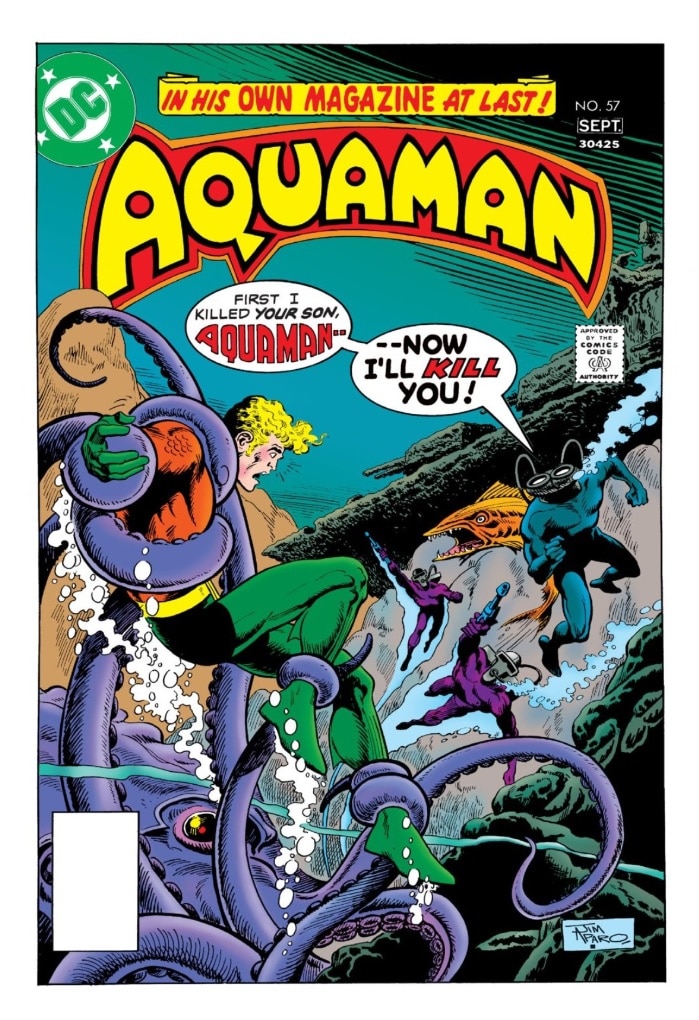
Aquaman's fantastical Golden Age origins alongside the success of the wacky and popular '60s Aquaman cartoons meant that the character had long been resigned to the pages of the proverbial DC Comics joke book. “Death of a Prince” changed all of that with a story that not only shifted the way readers viewed Aquaman and Mera, but also the DC hero archetype forever.
“Death of a Prince” is in no way a metaphorical name. The story centers on just that—the death of Arthur and Mera's son, Arthur Jr. Showing the death of a child in any medium is still near taboo, let alone in comics which were only coming out of a period of aggressive self-censorship. The Comics Code Authority was finally relaxing its grip on the comics industry, meaning that after twenty years of reactionary editing in response to the Wertham depositions, publishers finally began allowing darker and more complex stories to reach the shelves.
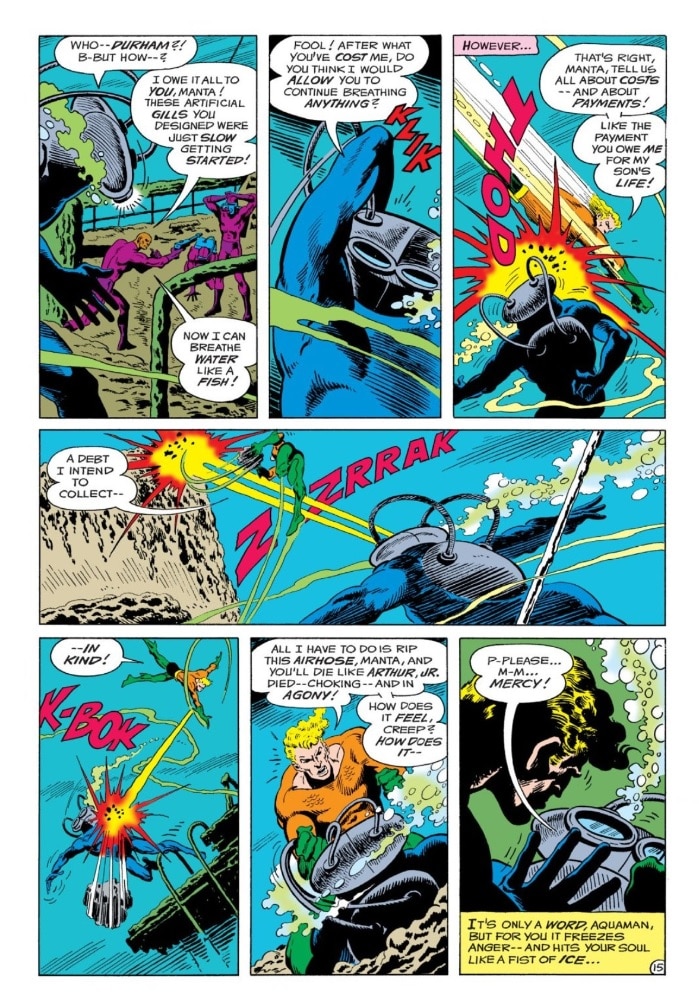
Flawed superhero stories may seem like the norm in 2020. In a post-Watchmen and The Dark Knight Returns world, they've arguably become the most prevalent narratives. But in 1974, seeing the aquatic star of the campy '60s cartoon becoming consumed by his war with Black Manta and ultimately losing his son because of it was shocking. “Death of a Prince” not only forces readers to question the actions of its protagonist, but also focuses on the breakdown of his marriage due to his actions. Out of the depths, here was a comic that demanded not only heroism but accountability from its hero. In this world, if you make a mistake, you pay a price.
The ramifications of Arthur's mistake are far reaching and heartbreaking. One of the most powerful examples of this comes in the Aquaman #59 story "The Kingdom of Doom" where we see Mera given hope that she may be able to save her son. With her child nearing death after being fatally wounded, the Queen of Atlantis returns to her home world to retrieve a device which might save him. Over the issue's backup story, we never see Arthur; this is an Aquaman story which doesn't feature Aquaman, only a woman desperate to save her son after the hubris of the man she loved throws her world into turmoil. Mera is the hero here, not only trying to save her son but also forced into a war for Xebel's throne.
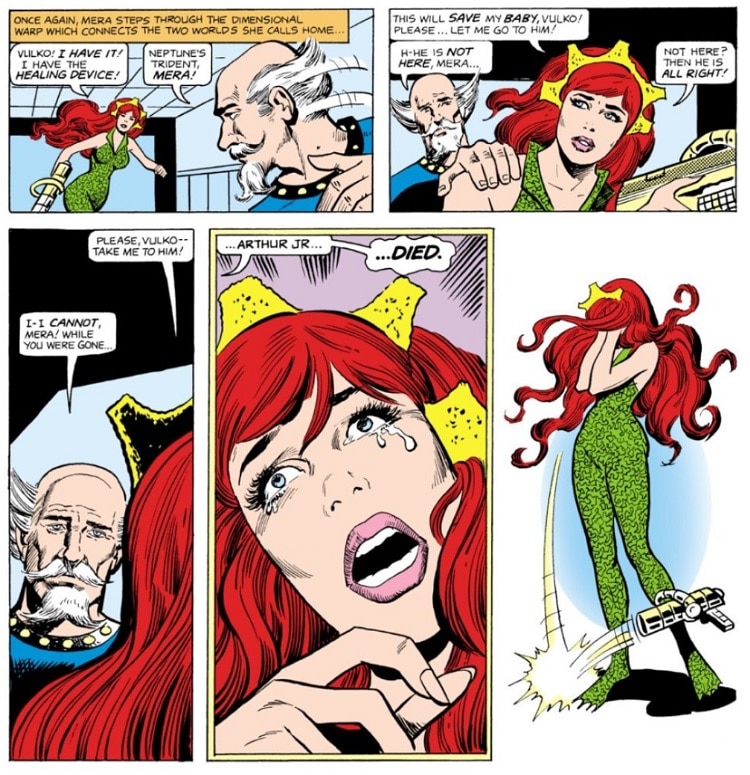
Mera's brush with hope comes to a brutal end in Aquaman #60, foreshadowing the end of her relationship with Arthur. In another bleak twist, Mera achieves what Arthur couldn't—she finds the device needed to save their son. She does everything she can, she fulfils the hero's archetype, taking the journey and finding the prize, but when she returns, her son has already died. Arthur and Mera's stories converge two issues later when the Queen of Atlantis confronts her husband in shocking fashion on the first page by declaring her hate for him.
Often the trauma of women is used solely to push a narrative forward, and sometimes it's ignored completely in favor of how said trauma affects the men in the victim’s life. In “Death of a Prince,” Mera is allowed to grieve, to be furious and to critique and criticize Arthur for his part in their son's untimely death. Here is a heroic and strong woman who is admonishing the comic’s star for the better part of the issue and at no point is she made to seem cruel or a nag. Mera's pain is valid and her anger is horribly relatable and raw.
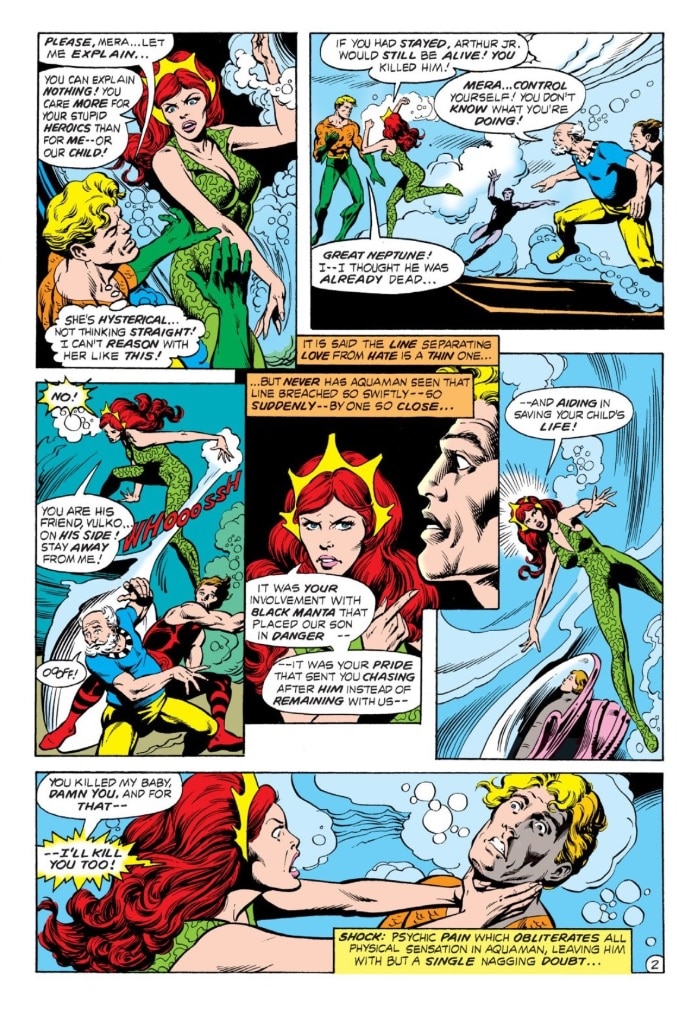
It was even more shocking to see the pair fight as Aquaman and Mera were one of superhero comics' first couples to ever marry on the page. Though the arc ends on a relatively positive note with Mera saving Arthur and Atlantis while coming to the realization that she wants to work to repair their marriage, it's still a heart-wrenching journey. Ultimately, it’s Mera who saves the day and, with her courage and forgiveness, ultimately their relationship.
Though the series shocked and enthralled readers on release, in hindsight it's not surprising the book was such a success. The credits read as a prescient who's who of comic book icons. David Michelinie was the lead writer, but the run included issues penned by Gerry Conway, Steve Skeates, Paul Levitz, Paul Kupperberg and Martin Pasko. Jim Aparo's art took center stage years before he became known for his definitive work on the Dark Knight. Of course, he wasn't alone with other pencillers like Carl Potts, Juan Ortiz, Don Newton and Mike Grell putting their immense talents on the pages of this amazing Aquaman arc. Groundbreaking romance comics artist and prolific colorist Liz Berube brought her immersive and unique style to the later Adventure Comics issues, bringing her talents over to the solo Aquaman series once it relaunched with #57.
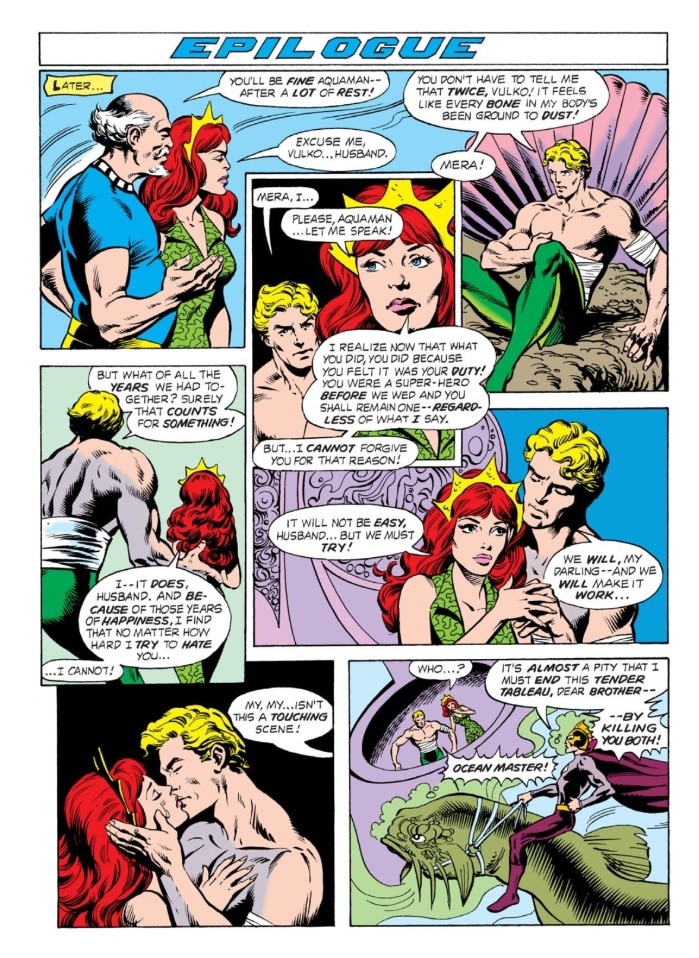
If you're looking for the perfect story to read during this strange time, pick up Aquaman: Death of a Prince. Even with the exploration of trauma, grief and loss, it's a visually beautiful and engaging story that broke new ground for the character and the medium, offering up a thoughtful and emotionally charged superhero story that still stands up to this day.
Aquaman: The Death of a Prince is available in a deluxe collected edition in print and as a digital graphic novel.
Rosie Knight writes about comics, movies and TV for DCComics.com and DCUniverse.com. For more from her, check out her article on why Swamp Thing should be your next DC binge and be sure to follow her on Twitter at @RosieMarx.




















